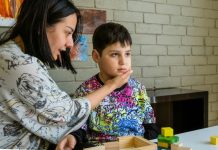
Autism Spectrum Disorder (ASD) is a developmental condition that affects social interaction, communication, interests, and behavior.
While the signs often develop in childhood, diagnosing autism at an early age has always been a challenge. Early diagnosis is crucial for initiating treatments that can be more effective when started at a younger age.
Traditional methods of diagnosing autism rely on observing behavior, which is often subjective and can lead to late or inaccurate diagnosis.
Breakthrough Research from China
A groundbreaking study from researchers at Peking University and the University of Electronic Science and Technology of China could be a game-changer in autism diagnosis.
Published in the journal Psychoradiology, the study used a type of brain imaging called Diffusion Tensor Imaging (DTI) to look for differences in brain connections between children with autism and those without it.
The research spanned across three Chinese cities and included children aged 3.5 to 6 years old.
The researchers found 33 specific brain connections, mostly in the front part of the brain, that were different in children with autism.
These differences were so distinct that they could correctly identify which kids had autism and which didn’t with an amazing accuracy rate of nearly 97%.
Even when they checked their findings against two other groups of children, the accuracy remained impressively high.
Interestingly, the research team also found that these brain differences were connected to key functions like memory, language, and social skills — all of which can be challenging areas for individuals with autism.
One set of connections was even tied to decision-making and social processing, which are often affected in people with autism.
What This Means for Future Diagnosis and Treatment
This new research is promising, but it’s just the beginning. One limitation was that the study focused on children aged 3.5 to 6, so it didn’t consider how these brain connections might change as kids get older.
Also, more research is needed to confirm if these brain changes are unique to autism or if they could be signs of other developmental conditions.
However, the study introduces the possibility of using brain imaging as an early, objective diagnostic tool for autism. This could lead to more personalized and effective treatments.
If doctors can diagnose autism based on actual differences in brain connections, they could start treatments earlier and potentially improve outcomes for affected kids.
In conclusion, the study is a significant step towards a more precise and early diagnosis of autism, opening doors for better clinical care and improved quality of life for children and their families.
If you care about autism, please read studies about a new cause of autism, and vitamin D could help lower the risk of autoimmune diseases.
For more information about health, please see recent studies about common signs and symptoms of autism, and gut health plays a role in autism.
The study was published in Psychoradiology.
Follow us on Twitter for more articles about this topic.
Copyright © 2023 Knowridge Science Report. All rights reserved.



